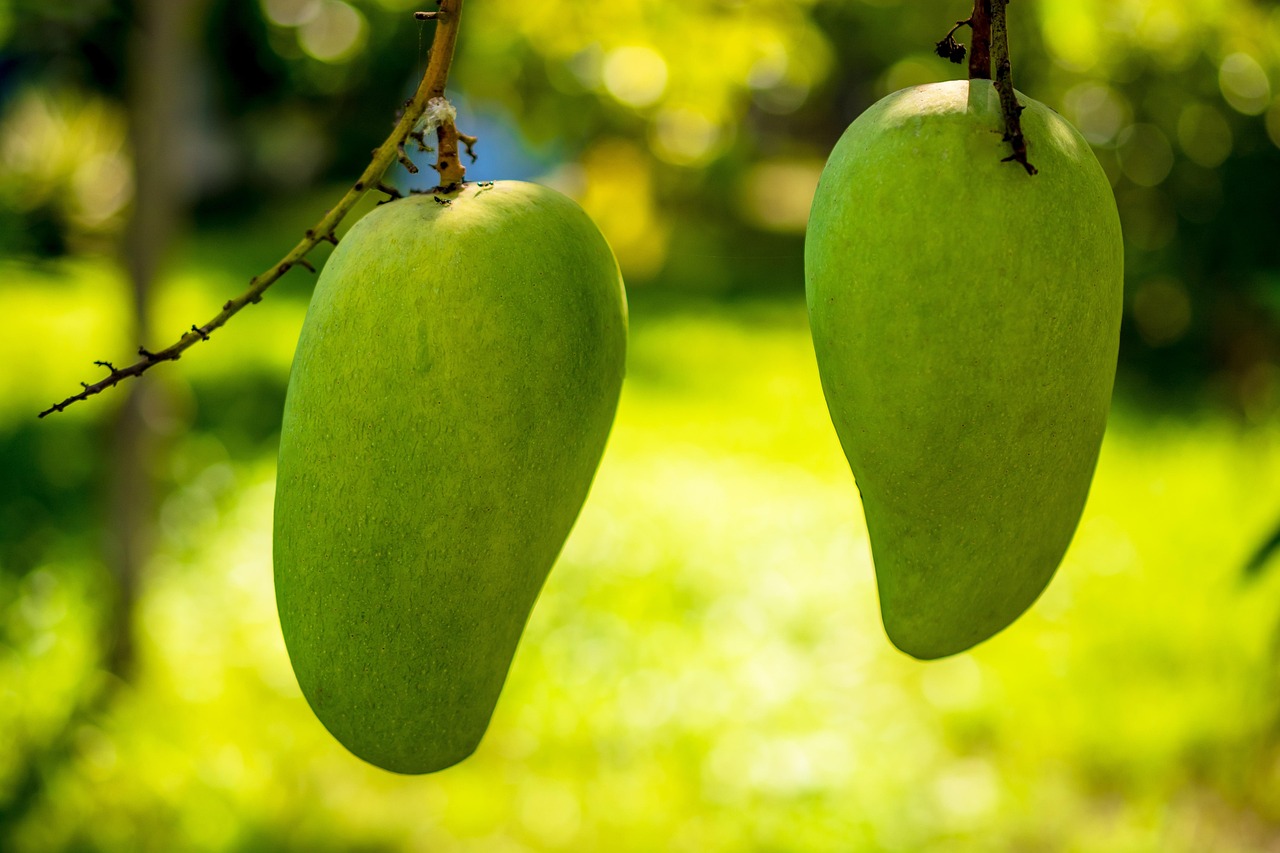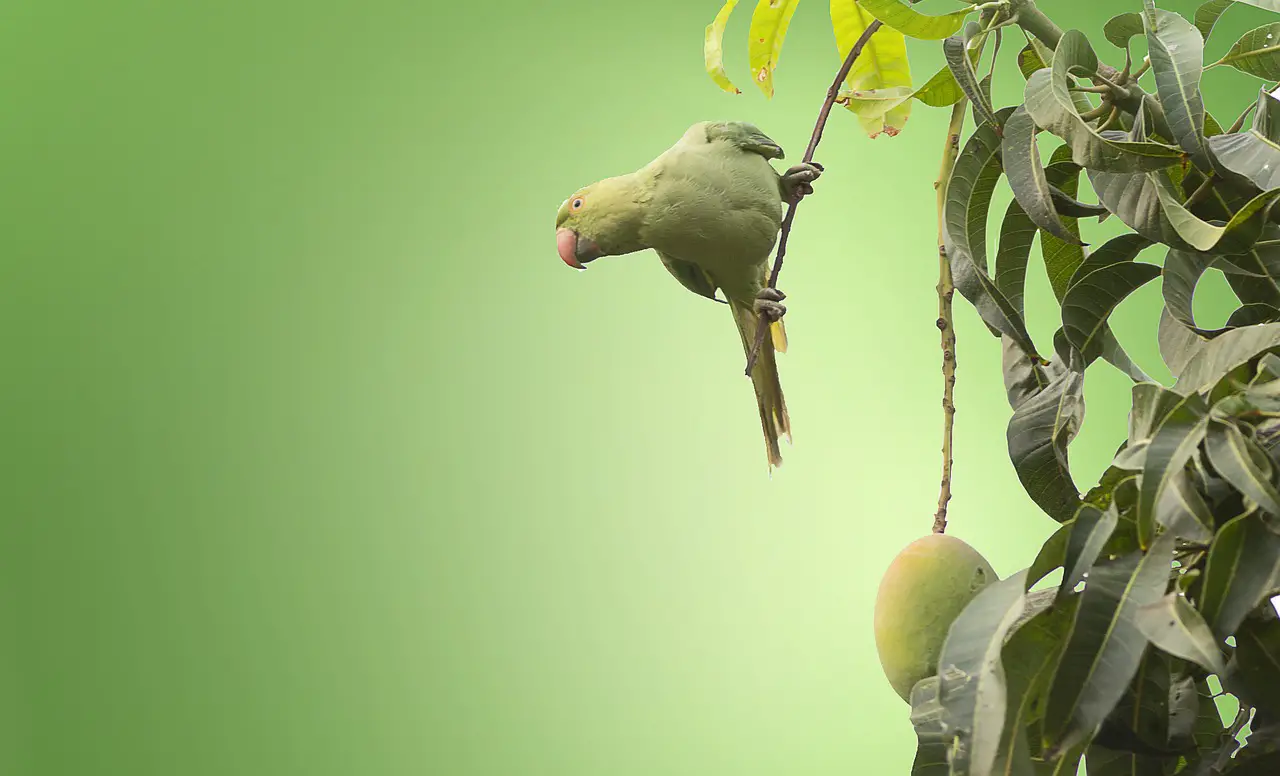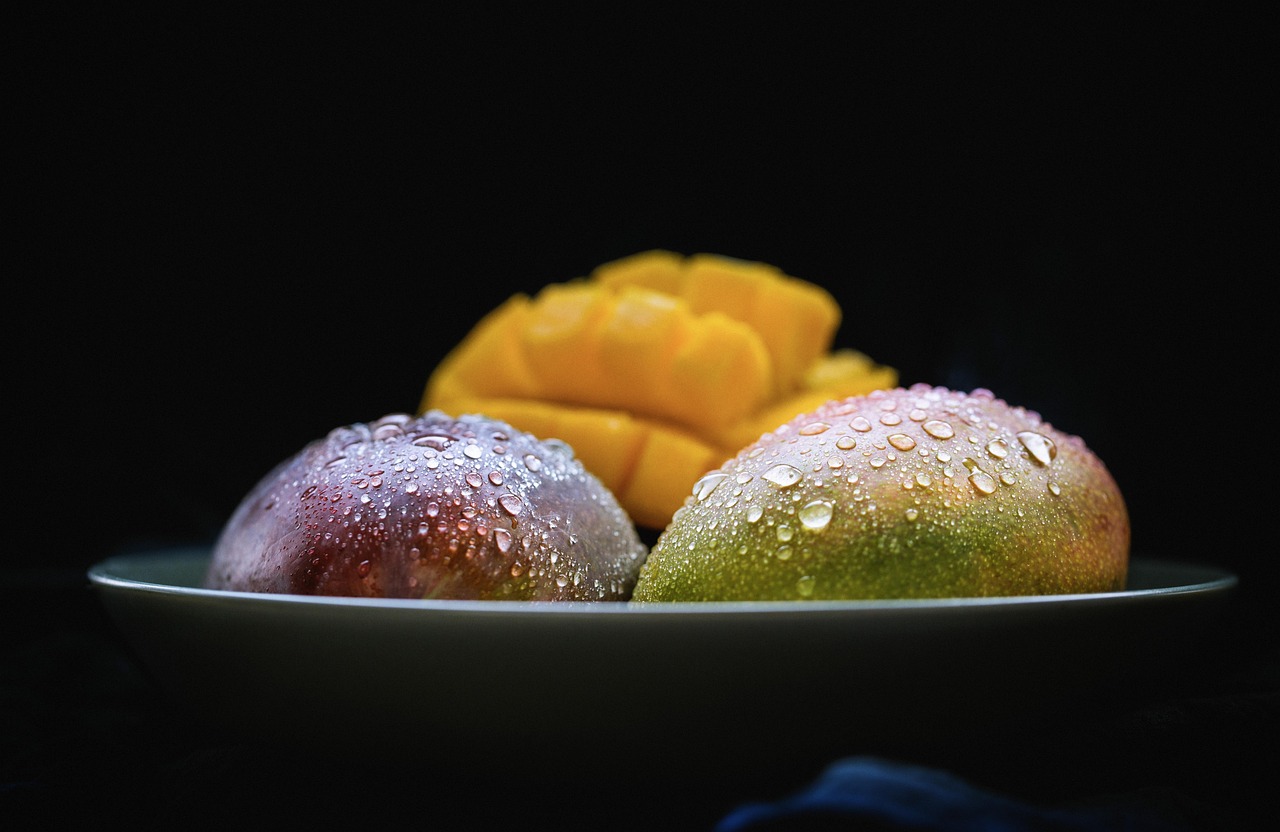Mango trees typically have a growth rate of about 1 to 2 feet per year under optimal conditions. Factors such as soil quality, climate, and care significantly influence their growth.
Mango Tree Growth Rate Overview
The mango tree, known scientifically as Mangifera indica, is a tropical fruit tree prized for its sweet and juicy fruit. Grown primarily in tropical and subtropical regions, mango trees thrive in conditions that promote rapid growth and fruit production. Understanding their growth rate is essential for farmers looking to cultivate mango trees effectively.

When establishing a mango farm, several factors will influence the growth rate of the trees. These include soil composition, water availability, temperature, and sunlight exposure. In addition, proper care—such as pruning, fertilization, and pest management—plays a crucial role in maximizing growth potential.
In general, young mango trees can be expected to grow quickly during their first few years. After planting, they typically reach a height of around 6 to 10 feet within three to five years, depending on the cultivar and environmental conditions. Following this initial phase, the growth rate may slow as the tree matures.
Factors Affecting Growth Rate
Several key factors influence the growth rate of mango trees on tropical fruit farms:

- Soil Quality: Nutrient-rich soil with good drainage is essential for healthy growth. Soil pH should ideally be between 5.5 and 7.5.
- Water Availability: Mango trees require regular watering, particularly during dry spells. However, overwatering can lead to root rot.
- Temperature: Optimal temperatures for mango growth range between 77°F and 95°F (25°C to 35°C). Extreme temperatures can hinder growth.
- Sunlight: Full sun exposure is vital for photosynthesis and fruit production. Mango trees need at least six hours of direct sunlight daily.
- Pest Management: Regular monitoring and management of pests and diseases are crucial to prevent damage that can slow growth.
Mango Tree Varieties
The growth rate can also vary significantly among different mango varieties. Some popular varieties include:
| Variety | Growth Rate | Fruit Characteristics |
|---|---|---|
| Haden | Moderate | Sweet, juicy, vibrant red skin |
| Tommy Atkins | Fast | Firm, mildly sweet, long shelf life |
| Alphonso | Moderate | Rich flavor, golden-yellow skin |
| Kent | Slow to Moderate | Sweet, fiberless flesh, green skin with red blush |
| Palmer | Fast | Mildly sweet, purple-red skin |
The growth rates of these varieties can be influenced by the factors mentioned earlier. For example, Tommy Atkins is known for its rapid growth and resilience, making it a popular choice among farmers aiming for quick yields.
Optimal Growing Conditions
To maximize the growth rate of mango trees, farmers should create optimal growing conditions. This includes:

- Selecting well-drained sandy loam soil enriched with organic matter.
- Providing sufficient irrigation during dry periods while avoiding waterlogging.
- Applying balanced fertilizers based on soil testing to ensure nutrient availability.
- Implementing proper pruning techniques to promote airflow and sunlight penetration.
- Regularly inspecting for pests and diseases to maintain tree health.
By focusing on these factors and techniques, farmers can encourage robust growth and increase the likelihood of successful fruit production. Understanding the specific requirements of mango trees will ultimately contribute to a thriving tropical fruit farm.
Propagation Methods for Mango Trees
Successful mango cultivation begins with effective propagation methods. Farmers can choose from several techniques to establish their mango trees. Each method has its advantages and challenges, which can influence the growth rate and overall health of the tree.
Seed Propagation
One common method of mango tree propagation is through seeds. This method is suitable for small-scale growers and those interested in experimenting with different varieties.
- Advantages:
- Cost-effective, as seeds are relatively inexpensive.
- Allows for the possibility of developing new cultivars.
- Disadvantages:
- Seedlings may take longer to bear fruit, often requiring 5 to 8 years.
- The resulting trees may not possess the same characteristics as the parent tree.
Vegetative Propagation
Vegetative propagation techniques, such as grafting and air layering, are often preferred by commercial growers due to their effectiveness in producing fruit-bearing trees more quickly.

Grafting
Grafting involves joining a scion (a piece of a desired variety) to a rootstock (a compatible root system). This technique allows growers to produce trees that will mature faster and maintain the characteristics of the parent tree.
- Advantages:
- Trees typically bear fruit within 3 to 4 years.
- Ensures uniformity in fruit quality and characteristics.
- Disadvantages:
- Requires skill and experience to perform successfully.
- May have higher initial costs due to the need for rootstock and scion materials.
Air Layering
Air layering involves inducing roots to form on a branch while it remains attached to the parent tree. Once roots develop, the branch can be cut and planted as a new tree.
- Advantages:
- Produces a mature tree faster than seed propagation.
- The new tree retains all characteristics of the parent plant.
- Disadvantages:
- Can be labor-intensive and requires careful monitoring.
- Limited to certain branches based on growth habits.
Pest and Disease Management
Mango trees are susceptible to various pests and diseases that can impact their growth rate and fruit production. Effective management strategies are essential for maintaining healthy trees.
Common Pests
Pests that frequently affect mango trees include:
- Mango Weevil: This pest can damage young fruits, leading to premature drop.
- Aphids: These insects can weaken trees by sucking sap and may transmit viral diseases.
- Mealybugs: They secrete honeydew, promoting sooty mold growth that can inhibit photosynthesis.
Disease Management
Mango trees can also be affected by diseases such as:
- Ani-rot: A fungal disease that causes black patches on fruits, making them unmarketable.
- Bacterial Black Spot: This disease leads to leaf spots and fruit blemishes, impacting overall health.
- Mango Sudden Death Syndrome: A serious condition that can kill trees rapidly, often linked to environmental stressors.
Pest and Disease Prevention Strategies
To manage pests and diseases effectively, farmers should consider the following strategies:
- Regular Monitoring: Inspect trees frequently for symptoms of pests or diseases.
- Cultural Practices: Implement practices such as crop rotation and proper spacing to reduce pest populations.
- Biological Control: Introduce beneficial insects, like ladybugs, to control pest populations naturally.
- Chemical Control: Use pesticides judiciously, ensuring they are appropriate for mango trees and follow local regulations.
By adopting a proactive approach to pest and disease management, farmers can help ensure that their mango trees grow healthily and produce abundant fruit. Understanding these aspects is vital for anyone looking to establish or maintain a successful mango farm in tropical regions.
Fertilization Practices for Mango Trees
Proper fertilization is crucial for ensuring healthy growth and optimal fruit production in mango trees. A well-planned fertilization program can significantly enhance the growth rate and overall yield of mango crops. Understanding the nutritional requirements of mango trees is essential for farmers aiming to maximize their fruit production.
Nutrient Requirements
Mango trees require various nutrients for healthy growth, including macronutrients and micronutrients. The primary macronutrients necessary for mango trees are:
- Nitrogen (N): Essential for leaf growth and overall tree vigor.
- Phosphorus (P): Important for root development and flowering.
- Potassium (K): Enhances fruit quality and disease resistance.
In addition to macronutrients, mango trees also require micronutrients, such as:
- Iron (Fe): Crucial for chlorophyll synthesis.
- Zinc (Zn): Supports growth and development, particularly in young trees.
- Magnesium (Mg): Important for photosynthesis and overall health.
Soil Testing
Before implementing a fertilization plan, conducting a soil test is essential. This test provides valuable information regarding the nutrient content and pH level of the soil. Based on the results, farmers can tailor their fertilization practices to meet the specific needs of their mango trees.
Fertilization Schedule
A well-timed fertilization schedule can enhance the growth rate and fruit yield of mango trees. A general fertilization schedule includes:
- Pre-planting: Incorporate organic matter, such as compost or well-rotted manure, into the soil before planting.
- First Year: Apply a balanced fertilizer (N-P-K) every 6-8 weeks during the growing season to promote strong root and leaf development.
- Second and Third Year: Gradually increase the amount of fertilizer while reducing frequency to 3-4 applications per year.
- Mature Trees: For mature trees, apply a balanced fertilizer once or twice a year during the growing season, depending on soil fertility.
Irrigation Practices for Mango Trees
Irrigation plays a critical role in supporting the growth rate of mango trees, particularly in tropical climates where rainfall may be inconsistent. Proper irrigation practices ensure that trees receive adequate moisture without waterlogging the roots.
Water Requirements
Mango trees typically require about 1-2 inches of water per week, depending on factors such as age, soil type, and weather conditions. Young trees may need more frequent watering compared to established trees, which can tolerate drier conditions once fully matured.
Irrigation Methods
Several irrigation methods can be employed for mango trees, including:
- Drip Irrigation: Offers precise water application directly to the root zone, minimizing evaporation and runoff.
- Surface Irrigation: Involves flooding fields with water, suitable for larger farms but may lead to water wastage if not managed properly.
- Sprinkler Irrigation: Provides uniform coverage but may increase humidity around the tree canopy, potentially leading to disease issues.
Irrigation Scheduling
To optimize water usage and support growth, farmers should establish an irrigation schedule based on environmental conditions. Factors to consider include:
- Soil Type: Sandy soils drain quickly and may require more frequent watering compared to clay soils.
- Weather Conditions: Adjust irrigation based on rainfall amounts and temperature fluctuations.
- Tree Age: Young trees generally require more consistent moisture than established trees.
A well-developed irrigation strategy not only supports tree growth but also contributes to improved fruit quality. Understanding the water needs of mango trees is essential for maximizing yields on tropical fruit farms.
Pruning Techniques for Mango Trees
Pruning is an important practice that enhances the growth rate and fruit production of mango trees. Proper pruning techniques can help shape the tree, improve airflow, and increase sunlight exposure to all parts of the tree.
Benefits of Pruning
The main benefits of pruning mango trees include:
- Improved Airflow: Reducing dense foliage allows better air circulation, which can help prevent disease.
- Sunlight Penetration: Pruning encourages light to reach inner branches, promoting even fruit development.
- Bigger Yields: Removing excess branches can lead to increased fruit production as energy is redirected to fewer, higher-quality fruits.
Pruning Techniques
Farmers should consider the following pruning techniques:
- Crown Thinning: Remove crowded branches to improve airflow and light penetration while maintaining the tree’s shape.
- Crown Lifting: Trim lower branches to reduce competition for light and facilitate easier harvesting.
- Crown Reduction: Shorten overly tall branches to manage height and promote healthy lateral growth.
By implementing effective pruning techniques, farmers can encourage healthy growth rates and enhance the overall productivity of their mango trees on tropical fruit farms.
Harvesting and Post-Harvest Management
Once mango trees reach maturity and begin to produce fruit, effective harvesting and post-harvest management practices become crucial for maintaining quality and maximizing yield. Proper techniques ensure that the fruit retains its flavor, texture, and marketability.
Harvesting Techniques
Harvesting mangoes requires careful timing and technique to avoid damaging the fruit or the tree. Here are important considerations:
- Timing: Mangoes should be harvested when they are mature but not overripe. The optimal time is usually indicated by a change in color and firmness of the fruit.
- Tools: Use sharp, clean tools to cut the fruit from the tree. Avoid pulling or twisting the fruit, as this can cause damage to both the fruit and the tree.
- Handling: Handle mangoes gently during harvesting to prevent bruising. Use padded containers to transport the fruit to avoid unnecessary impact.
Post-Harvest Practices
After harvesting, proper post-harvest management is essential to ensure the mangoes maintain their quality during storage and transportation:
- Cleaning: Gently rinse mangoes to remove dirt and residues while avoiding excessive water exposure.
- Sorting: Sort mangoes based on size, color, and quality. Remove any damaged or overripe fruit to maintain overall quality.
- Packaging: Pack mangoes carefully in ventilated boxes to allow proper air circulation. Avoid stacking too high to prevent crushing lower layers.
- Storage Conditions: Store mangoes at appropriate temperatures (typically around 55°F to 60°F) to prolong shelf life while minimizing spoilage.
The Economic Impact of Mango Cultivation
Mango cultivation can have significant economic benefits for farmers and local communities. Understanding these impacts can help farmers make informed decisions about their operations.
Profitability
Mango farming can be highly profitable due to the high demand for fresh mangoes in local and international markets. Factors contributing to profitability include:
- Market Demand: The global demand for mangoes continues to grow, driven by health-conscious consumers seeking fresh fruits.
- Diverse Uses: Mangoes can be sold fresh, dried, or processed into juices and other products, allowing farmers to diversify their income streams.
- Export Opportunities: Many countries export mangoes, providing opportunities for higher revenue if farmers adhere to quality standards.
Cultural Significance
Mangoes are often referred to as the “king of fruits” in many cultures. They hold significant cultural value in various regions, symbolizing prosperity, fertility, and celebration.
- Culinary Uses: Mangoes are an integral part of many traditional dishes and are used in desserts, salads, and beverages.
- Cultural Festivals: Many cultures celebrate festivals centered around mango harvests, reinforcing community ties and traditions.
Final Thoughts
The growth rate and successful cultivation of mango trees hinge on understanding various factors such as propagation methods, soil health, irrigation, pest management, and proper harvesting techniques. By implementing best practices in these areas, farmers can ensure healthy growth rates and bountiful harvests of high-quality mangoes.
As the demand for mangoes continues to rise, investing in effective mango farming techniques will not only benefit individual farmers but also contribute positively to local economies. By embracing sustainable practices and focusing on quality management, farmers can thrive in the competitive tropical fruit market.
In summary, the journey of cultivating mango trees involves a commitment to learning and adapting practices that foster growth. With attention to detail, knowledge of best practices, and a passion for this beloved fruit, farmers can create flourishing mango orchards that will yield delicious fruits for years to come.
